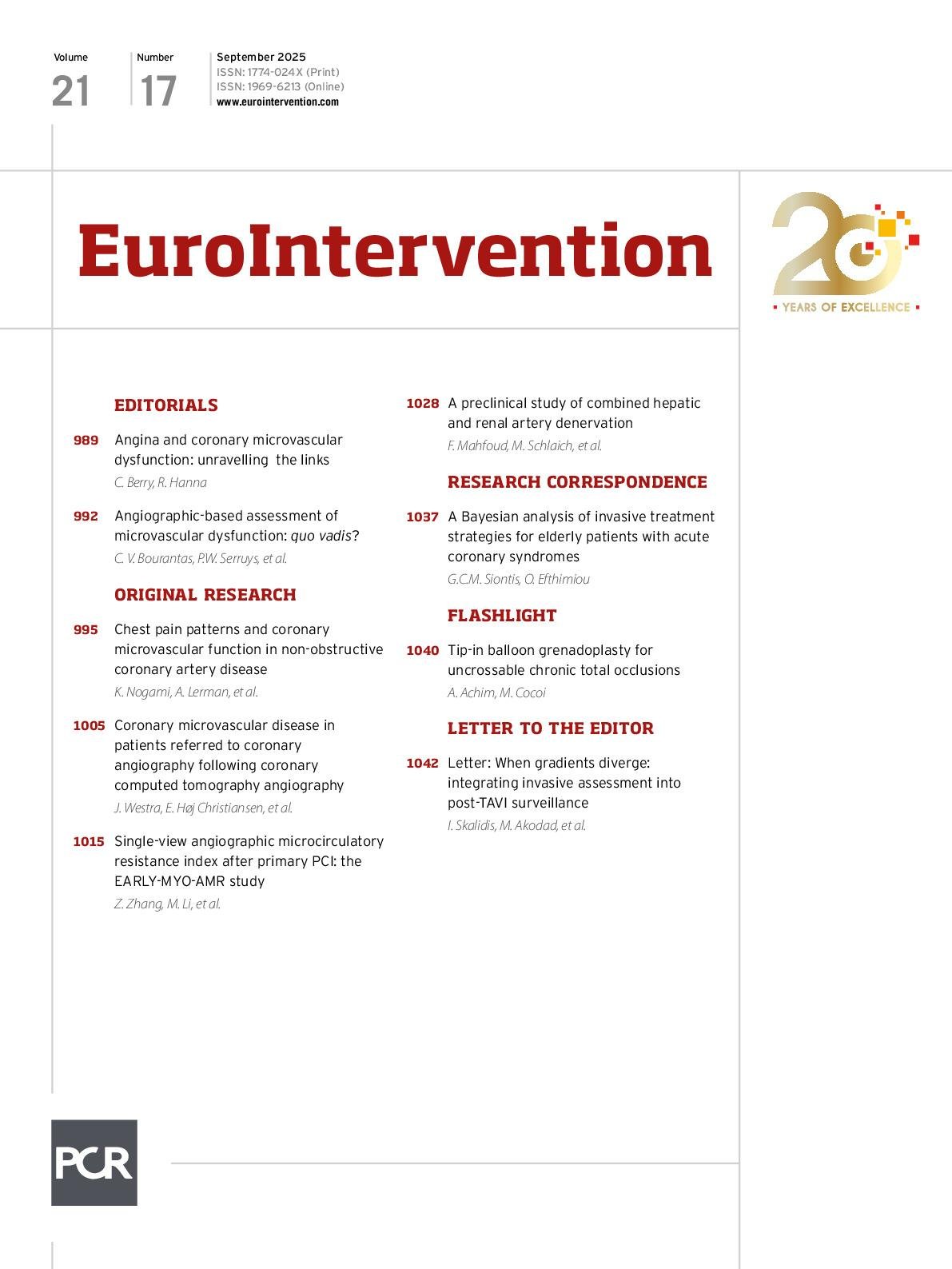Abstract
Background: Ischaemia without obstructive epicardial coronary artery disease (CAD) is common and is often related to coronary microvascular disease (CMD). Previous studies primarily focused on functional assessment in patients with established ischaemia without obstructive epicardial CAD.
Aims: We sought to assess the prevalence of CMD and compare clinical and procedural characteristics including myocardial perfusion imaging, as derived from rubidium-82 positron emission tomography (82Rb-PET), and health status according to CAD classification.
Methods: We conducted a prospective, observational study of symptomatic patients with suspected obstructive epicardial CAD on coronary computed tomography angiography. All patients were referred to 82Rb-PET and invasive coronary angiography with bolus thermodilution. CMD was defined as the absence of obstructive epicardial CAD (fractional flow reserve>0.80 or diameter stenosis <90%) combined with coronary flow reserve <2.5 and/or index of microvascular resistance ≥25. Main analyses included myocardial perfusion characteristics by 82Rb-PET and health status at baseline and at 3-month follow-up according to CAD classification (no disease, obstructive epicardial CAD, isolated CMD or combined obstructive epicardial CAD and CMD).
Results: Among 561 patients, isolated CMD was diagnosed in 131 patients (prevalence 0.23, 95% confidence interval [CI]: 0.20-0.27). Vessel territories with isolated CMD were characterised by similar perfusion characteristics to non-diseased vessels (mean difference in hyperaemic myocardial blood flow 0.03 [95% CI: −0.13 to 0.06] mL/min/g). Patients with isolated epicardial disease on both patient and vessel levels had reduced stress myocardial blood flow compared to patients without disease. The probability of being angina-free at 3 months tended to be lower for the CMD group (odds ratio [OR] 0.56, 95% CI: 0.31-1.00) and higher for the revascularised epicardial disease group (OR 1.52, 95% CI: 0.94-2.48) compared to the group classified as not diseased.
Conclusions: CMD, as identified with bolus thermodilution, is common in patients referred to invasive coronary angiography based on suspected obstructive epicardial CAD even in patients with normal stress myocardial blood flow by 82Rb-PET. (ClinicalTrials.gov: NCT02264717 and NCT04707859)
Sign up for free!
Join us for free and access thousands of articles from EuroIntervention, as well as presentations, videos, cases from PCRonline.com

